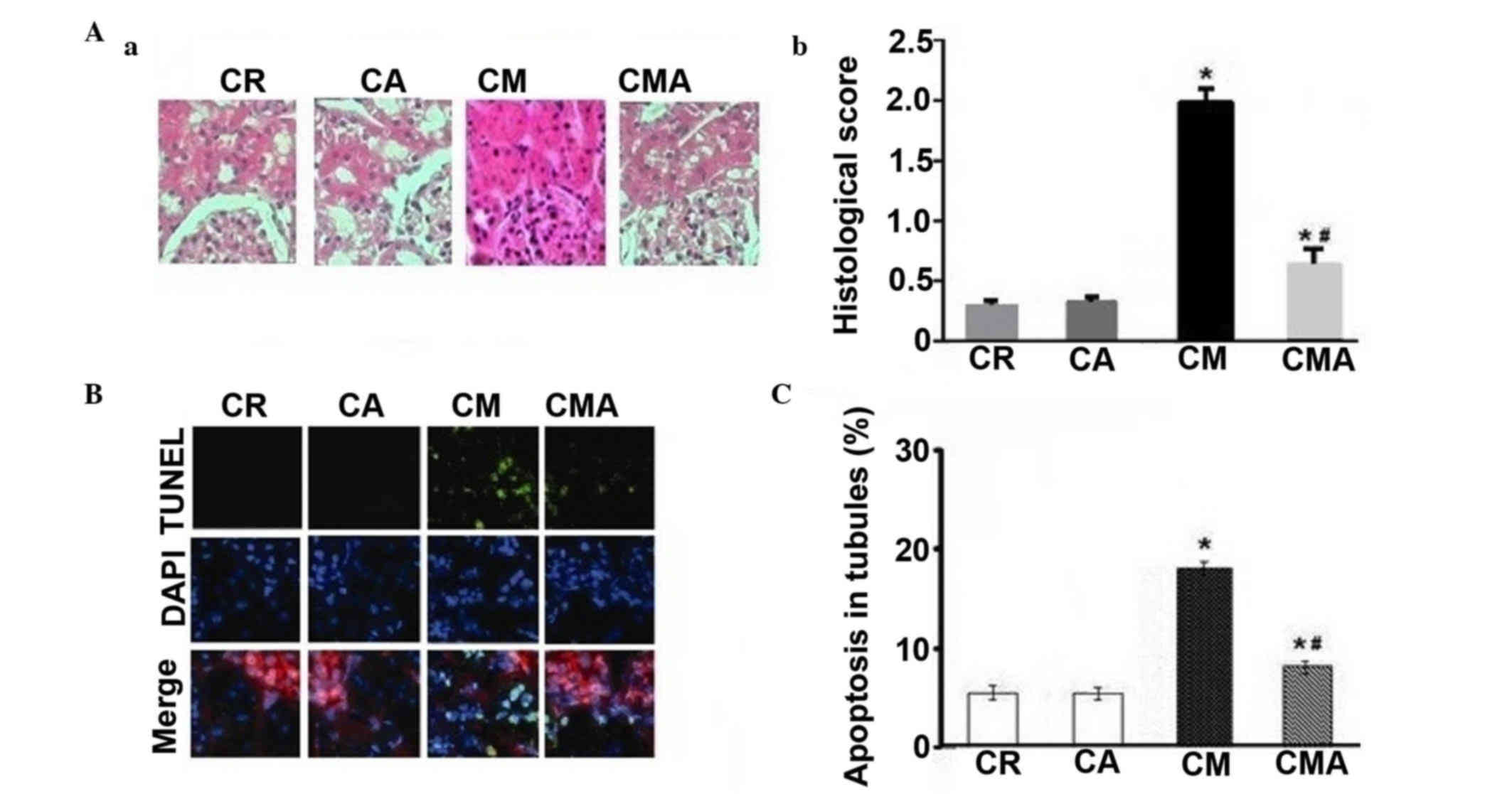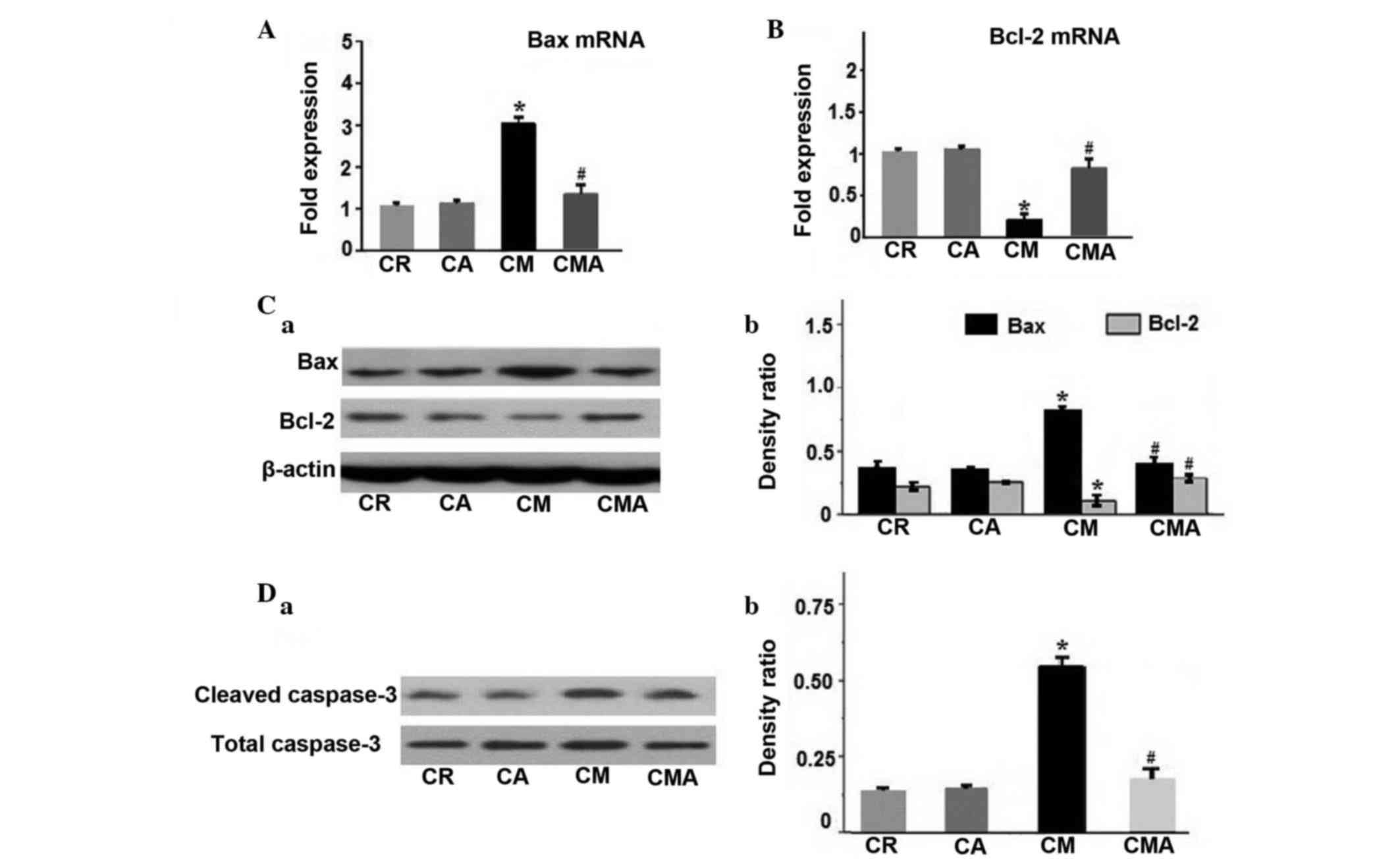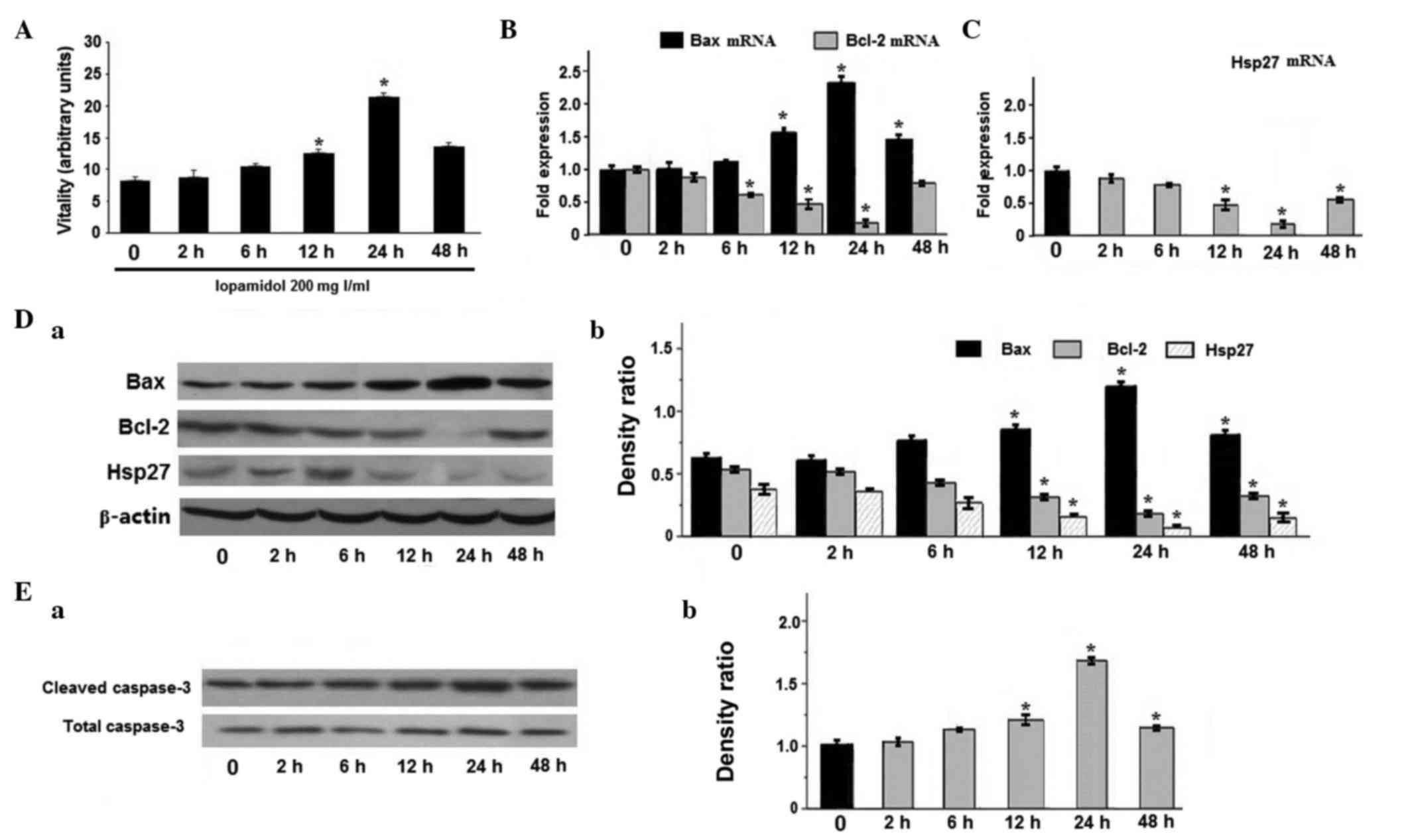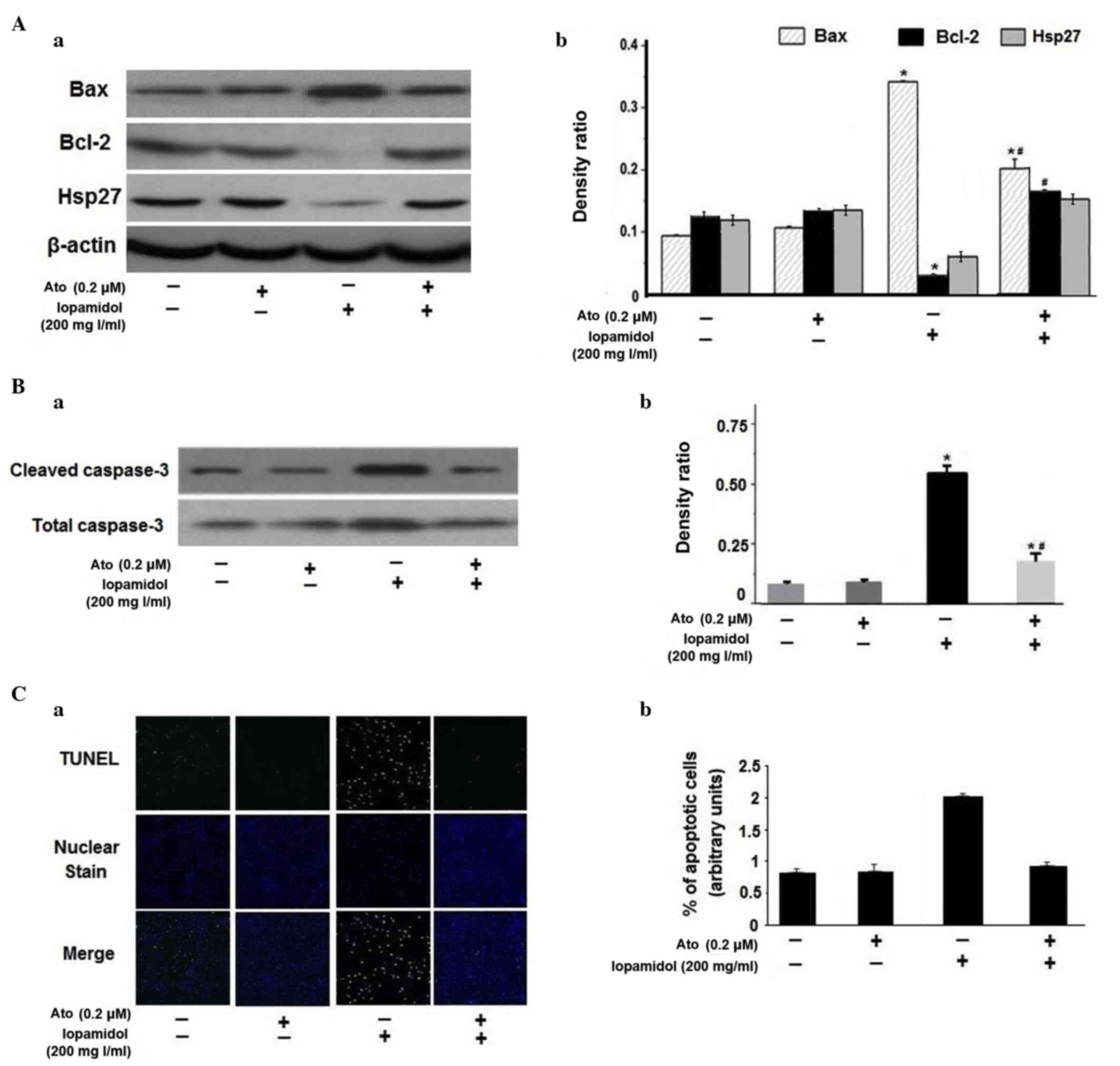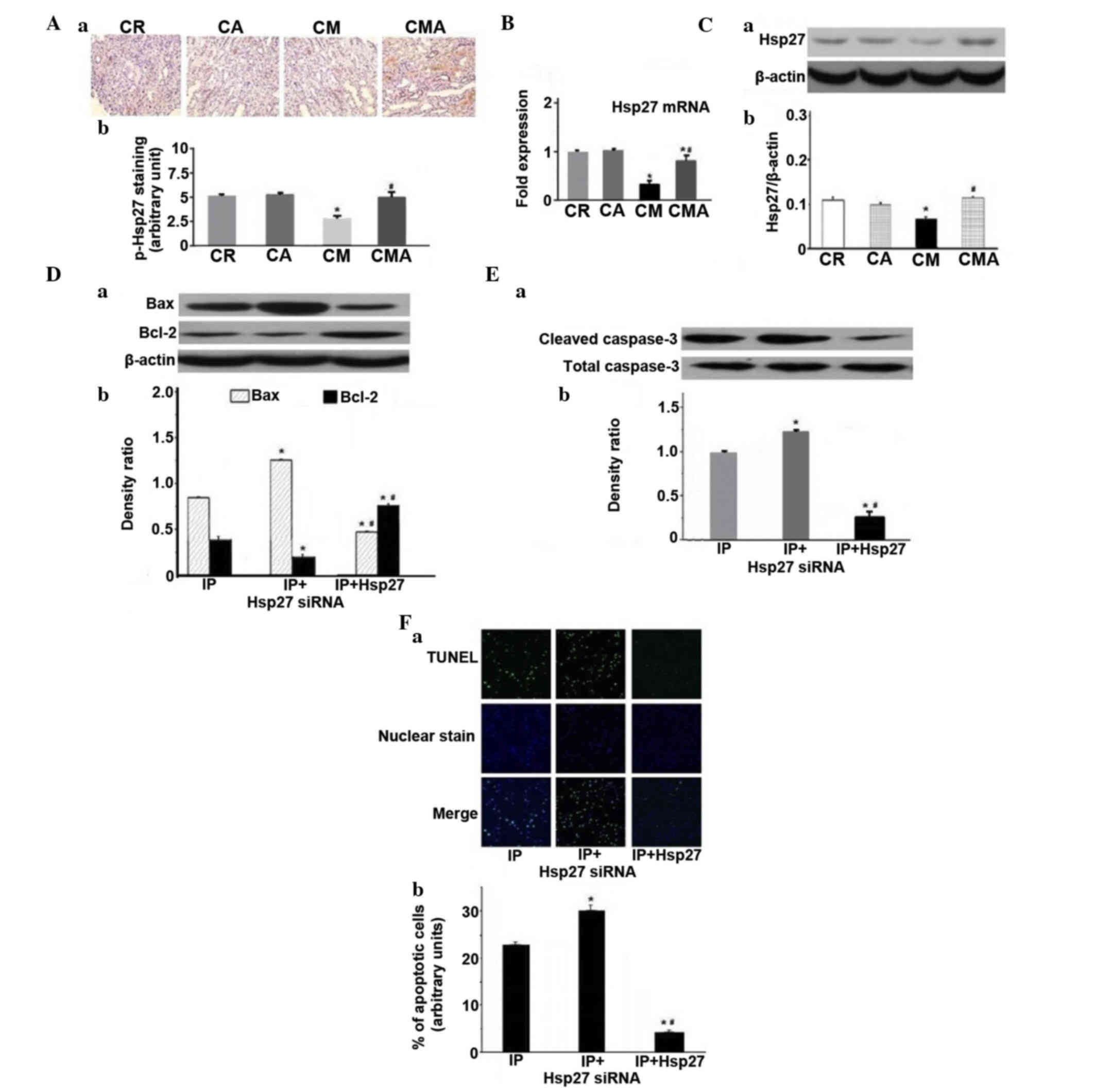|
1
|
Nash K, Hafeez A and Hou S:
Hospital-acquired renal insufficiency. Am J Kidney Dis. 39:930–936.
2002. View Article : Google Scholar : PubMed/NCBI
|
|
2
|
Schilp J, De Blok C, Langelaan M,
Spreeuwenberg P and Wagner C: Guideline adherence for
identification and hydration of high-risk hospital patients for
contrast-induced nephropathy. Bmc Nephrology. 15:22014. View Article : Google Scholar : PubMed/NCBI
|
|
3
|
Jorgensen AL: Contrast-induced
nephropathy: Pathophysiology and preventive strategies. Crit Care
Nurse. 33:37–46. 2013. View Article : Google Scholar : PubMed/NCBI
|
|
4
|
Liu Y, Tan N, Chen J, Zhou Y, Chen L, Chen
S, Chen Z and Li L: The relationship between hyperuricemia and the
risk of contrast-induced acute kidney injury after percutaneous
coronary intervention in patients with relatively normal serum
creatinine. Clinics (Sao Paulo). 68:19–25. 2013. View Article : Google Scholar : PubMed/NCBI
|
|
5
|
Rundback JH, Nahl D and Yoo V:
Contrast-induced nephropathy. J Vasc Surg. 54:575–579. 2011.
View Article : Google Scholar : PubMed/NCBI
|
|
6
|
Liu YH, Liu Y, Tan N, Chen JY, Zhou YL,
Luo JF, Yu DQ, Li LW, Li HL, Ye P and Ran P: Contrast-induced
nephropathy following chronic total occlusion percutaneous coronary
intervention in patients with chronic kidney disease. Eur Radiol.
25:2274–2281. 2015. View Article : Google Scholar : PubMed/NCBI
|
|
7
|
Buyuklu M, Kandemir FM, Ozkaraca M, Set T,
Bakirci EM and Topal E: Protective effect of curcumin against
contrast induced nephropathy in rat kidney: What is happening to
oxidative stress, inflammation, autophagy and apoptosis? Eur Rev
Med Pharmacol Sci. 18:461–470. 2014.PubMed/NCBI
|
|
8
|
Quintavalle C, Brenca M, De Micco F, Fiore
D, Romano S, Romano MF, Apone F, Bianco A, Zabatta MA, Troncone G,
et al: In vivo and in vitro assessment of pathways involved in
contrast media-induced renal cells apoptosis. Cell Death Dis.
2:e1552011. View Article : Google Scholar : PubMed/NCBI
|
|
9
|
Al-Otaibi KE, Al Elaiwi AM, Tariq M and
Al-Asmari AK: Simvastatin attenuates contrast-induced nephropathy
through modulation of oxidative stress, proinflammatory
myeloperoxidase and nitric oxide. Oxid Med Cell Longev.
2012.8317482012.PubMed/NCBI
|
|
10
|
Patti G, Ricottini E, Nusca A, Colonna G,
Pasceri V, D'Ambrosio A, Montinaro A and Di Sciascio G: Short-term,
high-dose atorvastatin pretreatment to prevent contrast-induced
nephropathy in patients with acute coronary syndromes undergoing
percutaneous coronary intervention (from the armyda-cin
(atorvastatin for reduction of myocardial damage durin during
angioplasty-contrast-induced nephropathy) trial. Am J Cardiol.
108:1–7. 2011. View Article : Google Scholar : PubMed/NCBI
|
|
11
|
Quintavalle C, Fiore D, DeMicco F,
Visconti G, Focaccio A, Golia B, Ricciardelli B, Donnarumma E,
Bianco A, Zabatta MA, et al: Impact of a high loading dose of
atorvastatin on contrast-induced acute kidney injury. Circulation.
126:3008–3016. 2012. View Article : Google Scholar : PubMed/NCBI
|
|
12
|
Patti G, Nusca A, Chello M, Pasceri V,
D'Ambrosio A, Vetrovec GW and Di Sciascio G: Usefulness of statin
pretreatment to prevent contrast-induced nephropathy and to improve
long-term outcome in patients undergoing percutaneous coronary
intervention. AM J Cardiol. 101:279–285. 2008. View Article : Google Scholar : PubMed/NCBI
|
|
13
|
Bakthisaran R, Tangirala R and Rao CM:
Small heat shock proteins: Role in cellular functions and
pathology. Biochim Biophys Acta. 1854:291–319. 2015. View Article : Google Scholar : PubMed/NCBI
|
|
14
|
Acunzo J, Andrieu C, Baylot V, So A and
Rocchi P: Hsp27 as a therapeutic target in cancers. Curr Drug
Targets. 15:423–431. 2014. View Article : Google Scholar : PubMed/NCBI
|
|
15
|
Clark JD, Gebhart GF, Gonder JC, Keeling
ME and Kohn DF: Special Report: The 1996 Guide for the Care and Use
of Laboratory Animals. ILAR J. 38:41–48. 1997. View Article : Google Scholar : PubMed/NCBI
|
|
16
|
Inci MF, Salk I, Solak O, Vurdem UE and
Inci R: Use of N-acetylcysteine for the prevention of
contrast-induced nephropathy in rats. Actas Urol Esp. 36:210–215,
(In Spanish). 2012. View Article : Google Scholar : PubMed/NCBI
|
|
17
|
Livak KJ and Schmittgen TD: Analysis of
relative gene expression data using real-time quantitative PCR and
the 2(−Delta Delta C(T)) Method. Methods. 25:402–408. 2001.
View Article : Google Scholar : PubMed/NCBI
|
|
18
|
He X, Gao X, Peng L, Wang S, Zhu Y, Ma H,
Lin J and Duan DD: Atrial fibrillation induces myocardial fibrosis
through angiotensin II type 1 receptor-specific Arkadia-mediated
downregulation of Smad7. Cir Res. 108:164–175. 2011. View Article : Google Scholar
|
|
19
|
Lauta VM: Interleukin-6 and the network of
several cytokines in multiple myeloma: An overview of clinical and
experimental data. Cytokine. 16:79–86. 2001. View Article : Google Scholar : PubMed/NCBI
|
|
20
|
Ahmad A, Mondello S, Di Paola R, Mazzon E,
Esposito E, Catania MA, Italiano D, Mondello P, Aloisi C and
Cuzzocrea S: Protective effect of apocynin, a NADPH-oxidase
inhibitor, against contrast-induced nephropathy in the diabetic
rats: A comparison with n-acetylcysteine. Eur J Pharmacol.
674:397–406. 2012. View Article : Google Scholar : PubMed/NCBI
|
|
21
|
Su J, Zou W, Cai W, Chen X, Wang F, Li S,
Ma W and Cao Y: Atorvastatin ameliorates contrast medium-induced
renal tubular cell apoptosis in diabetic rats via suppression of
Rho-kinase pathway. Eur J Pharmacol. 723:15–22. 2014. View Article : Google Scholar : PubMed/NCBI
|
|
22
|
Riad A, Du J, Stiehl S, Westermann D, Mohr
Z, Sobirey M, Doehner W, Adams V, Pauschinger M, Schultheiss HP and
Tschöpe C: Low-dose treatment with atorvastatin leads to
anti-oxidative and anti-inflammatory effects in diabetes mellitus.
Eur J Pharmacol. 569:204–211. 2007. View Article : Google Scholar : PubMed/NCBI
|
|
23
|
Chang CF, Lu TM, Yang WC, Lin SJ, Lin CC
and Chung MY: Gene polymorphisms of interleukin-10 and tumor
necrosis factor-α are associated with contrast-induced nephropathy.
Am J Nephrol. 37:110–117. 2013. View Article : Google Scholar : PubMed/NCBI
|



